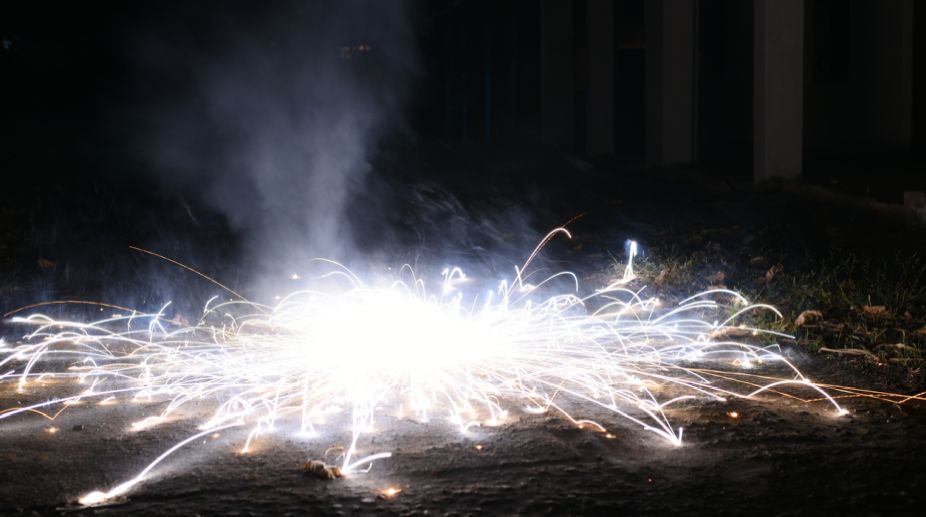The colourful fireworks and the enthralling bright lights that adorn the cities of India every year during Kali Puja and Diwali are definitely a sight to behold. But, the brightness has its dark side effects too.
The huge numbers of fireworks that are burnt during these two days are extremely harmful to the environment as well as to the health of all the people in the vicinity. During Kali Puja, the smokes produced while bursting firecrackers are considered the most harmful as they are released at low levels near residential areas.
Advertisement
It contains chemicals, which are extremely toxic when inhaled, and can cause long term health problems. They mostly contain a mixture of sulphur-coal compounds, traces of heavy metals, among other harmful chemicals and compounds. Antimony Trisulphide causes the glittery effects of phuljhuris (sparklers) and ‘rockets’.
A toxic smoke is released, when burnt, is a possible carcinogen. Sulphur Dioxide, which is formed upon burning sulphur compounds, causes acid rain, while nitrogen dioxide, a fireworks byproduct, is highly toxic upon inhalation and increases Sudden Infant Death Syndrome (SIDS) risk. Chemicals present in fireworks affect young and old alike. The stunning colours of fireworks are created by burning chemicals that affect our health.
Heavy metals are used to produce the colours, often include outdated ones such as rubidium and cadmium. These can cause minor radioactive fallouts and increase risk of cancer, cause skin irritations and small time breathing problems.
Arsenic compounds are commonly used as colourants; barium nitrate produces glittering green colours; and copper compounds, produces blue colours. Eyes are affected when firework projectiles hit the cornea of the eye thus damaging it. These projectiles are usually hot, and can cause irreparable damage to sight. Booming loud noises are heard while bursting bombs. Though we enjoy the sudden noise, it has side effects on our health.
World Health Organisation advisories state adult noise exposure should be limited to 140 decibels, whereas fireworks produce 150 to 175 decibels. This exposure can cause tinnitus or a ringing sensation in the ears, which is a symptom of hearing loss.
Extreme exposure to such loud noises can also result in disorientation and mental impairment. Thus, it should be made sure that those should not be burnt near residential areas, especially late night. Suspended Particulate Matter (SPM) is another menace which has become a matter of concern for environmentalists recently. In the days immediately after Kali Puja and Diwali, the atmosphere gets filled with smog, a mixture of smoke and fog. In Delhi, smog blocks the sun for several days after Diwali. These particles which float in the air affect our respiratory systems causing throat and chest congestions. Thus, one should be aware of such facts and limit Kali Puja and Diwali celebrations to lighting smaller crackers.
Though firecrackers displays are wonderful to see, it affects our environment adversely. Celebrations don’t essentially mean how many of them can be burnt, but how one can enjoy the true essence of the festival responsibly.
One can put up small lights across ones’ home or arrange community fireworks displays, at a distance from residential areas, which would minimise the effects.
This Kali Puja let us take a pledge to think about our environment a bit more, and make the Earth a better place for the future generations to live in.
(Coordinator, Class XII, South Point High School)











